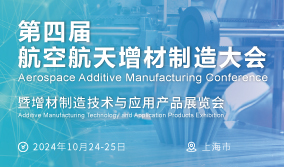硅酸盐学报, 2025, 53 (4): 849, 网络出版: 2025-05-29
热电制冷技术在芯片热管理中的应用【增强内容出版】
Application of Thermoelectric Cooling on Chip Thermal Management
热电技术 芯片 半导体材料 薄膜器件 热管理 thermoelectrics chips semiconductor materials thin-film devices thermal management
AI一图读本文 AI语音精读 AI语音超短摘要
注:本部分内容由 AI 自动生成,仅供您参考。对于您使用本站 AI 自动生成内容所产生的一切后果,本网站及平台运营方概不承担任何商业和法律责任,请您知悉。
摘要
Abstract
The exponential explosive growth in transistor density enhances chip performance, while introducing significant thermal management challenges based on the Moore law. Effective thermal management is critical to maintaining chip performance and preventing damage in high-power-density systems. Conventional passive cooling, such as heat sinks and thermal interface materials, struggle to address the transient and localized heat flux in modern chips. It is thus necessary to develop innovative cooling solutions beyond conventional techniques. Thermoelectric cooling (TEC), based on the Peltier effect, stands out due to its precise temperature control, rapid thermal response, and high reliability. Furthermore, its adaptability to complex and uneven thermal profiles renders it particularly effective in managing localized hotspots in high-performance chips. However, realizing the full potential of TEC requires the development on material design, device integration as well as system-level optimization.This review represents the foundational principles of thermoelectrics (TEs) and analyzes the theoretical formulations pertaining to maximum heat dissipation power and cooling coefficient. It highlights that chip-level TEC differs from conventional goals, prioritizing a high the dimensionless figure of merit and a low thermal conductivity. Instead, chip applications require a balance between the relatively high thermal conductivity and elevated power factor to facilitate efficient heat dissipation. This review evaluates mainstream TE materials, including bismuth telluride-based materials, selenide based-materials, and magnesium based-alloys, alongside promising emerging materials such as Heusler alloys and magnon-drag metals. Some fabrication strategies, including nanostructure design, doping, and interface engineering, are emphasized.Except for materials, device design is critical for chip thermal management. TEC encounters commercialization challenges due to the need for ultra-thin (i.e., <50 μm) film structures directly attached to chip hotspots. Optimizing the geometric dimensions of TE legs (i.e., n-type and p-type material width ratios) and modular layouts enables efficient localized cooling, while minimizing interfacial thermal resistance and electrical losses. Devices must also handle high heat flux densities (>1000 W/cm2) and provide millisecond-scale thermal responses. Two primary micro-TEC architectures including out-of-plane and in-plane TE devices are examined. Note that multi-stage module configurations can significantly improve cooling performance via reducing cold-side temperatures and enhancing heat extraction efficiency.For the encapsulation architectures, two-dimensional (2D) and three-dimensional (3D) architectures with system-level optimization of thin-film TECs are explored. Integrating TEC with liquid cooling or heat pipes address the constraints of single method, thus providing effective solutions for both hotspot cooling and uniform heat dissipation. For instance, TE modules can decrease the cold-end temperature in liquid cooling systems or provide localized cooling in heat pipe setups, thereby ensuring optimal thermal distribution. As chip designs increasingly trend towards higher integration and miniaturization, the scalability and compactness of TE modules become critical. Advances in nanotechnology, 3D integration, and composite materials propel the development of ultra-thin, high-power-density TE modules that seamlessly integrate into chip architectures. Innovations in cost-effective manufacturing and material reliability are also essential for advancing commercialization and long-term sustainability.Summary and ProspectsTEC technology offers precise temperature control, addressing challenges like localized hotspots and complex heat flows in high-power-density chips, which is a key technology for sustainable and high-efficiency thermal management. However, the existing researches still face significant challenges in achieving the ultra-thin designs and high-efficiency required for modern chip architectures. The ability to manage transient high heat flux while maintaining scalability and cost-efficiency remains a concern. Future efforts should focus on the balance of cost, durability, and TE properties of materials through nanoengineering, doping, and interface engineering to enhance their performance. In terms of device design, optimizing multi-stage architectures and achieving miniaturization alongside intelligent functionalities will enable more efficient heat dissipation. These improvements are indispensable for catering to the increasing demands of high-power chips. At the system level, the integration of TEC with liquid cooling or heat pipes will enhance overall thermal management efficiently. The incorporation of TE generation provides new opportunities for constructing sustainable and energy-efficient cooling systems. With continued innovation in materials preparation, device design, and system integration, TEC may pave a way for efficient, reliable, and scalable solutions for the next generation of electronic systems.
逯瑶, 范馨月, 罗杰, 刘文静, 赵立东. 热电制冷技术在芯片热管理中的应用[J]. 硅酸盐学报, 2025, 53(4): 849. LU Yao, FAN Xinyue, LUO Jie, LIU Wenjing, ZHAO Lidong. Application of Thermoelectric Cooling on Chip Thermal Management[J]. Journal of the Chinese Ceramic Society, 2025, 53(4): 849.




